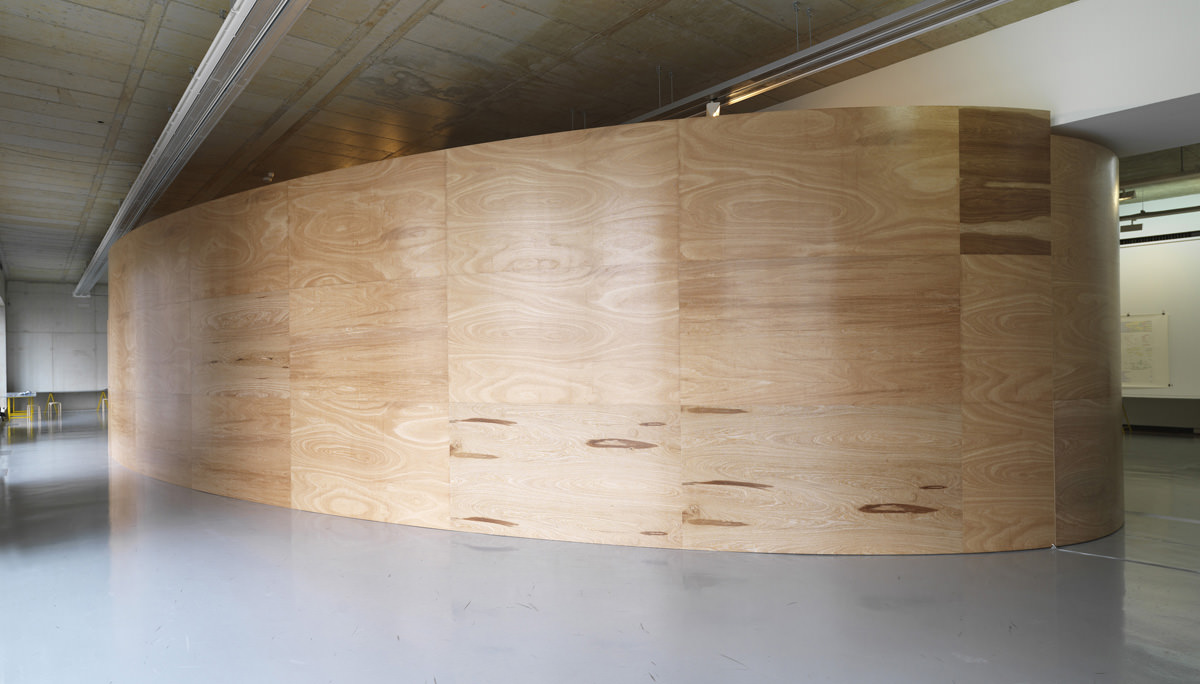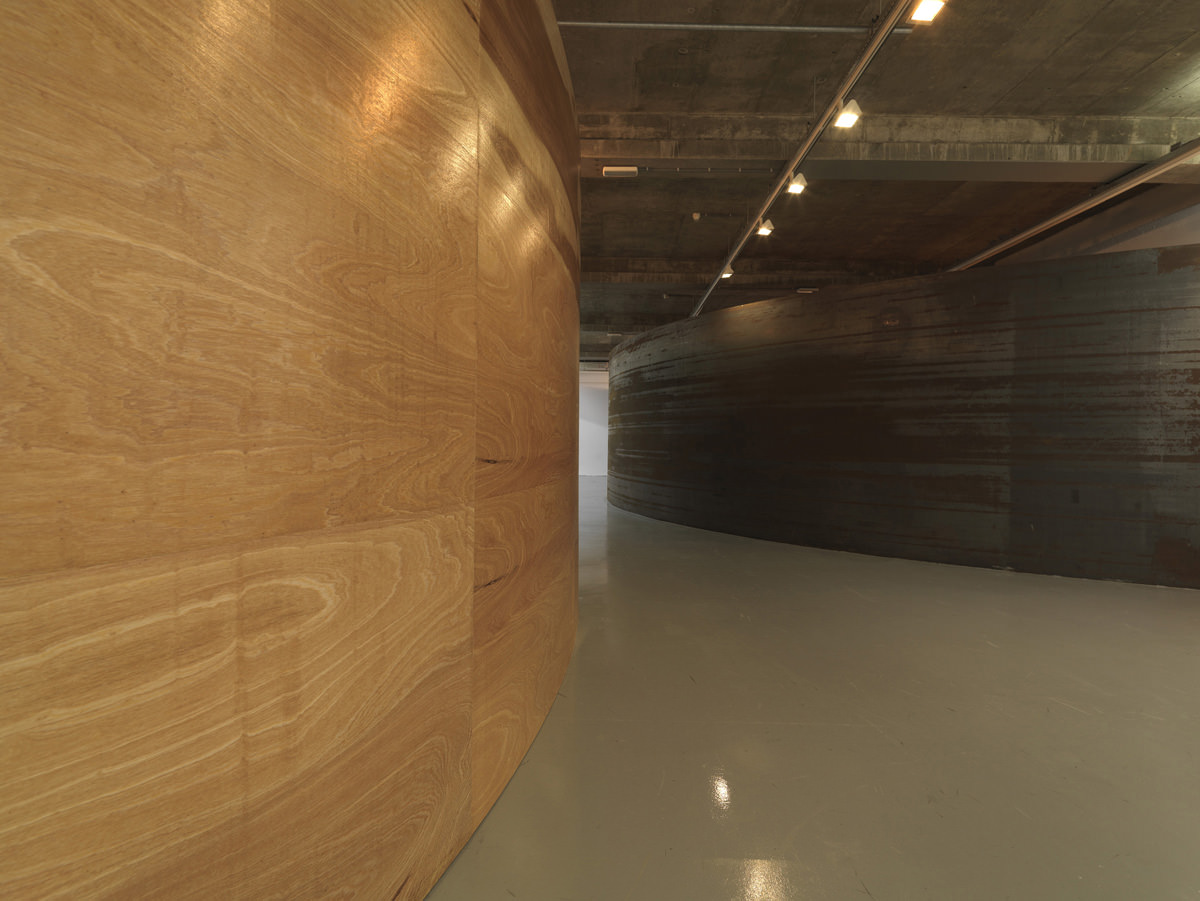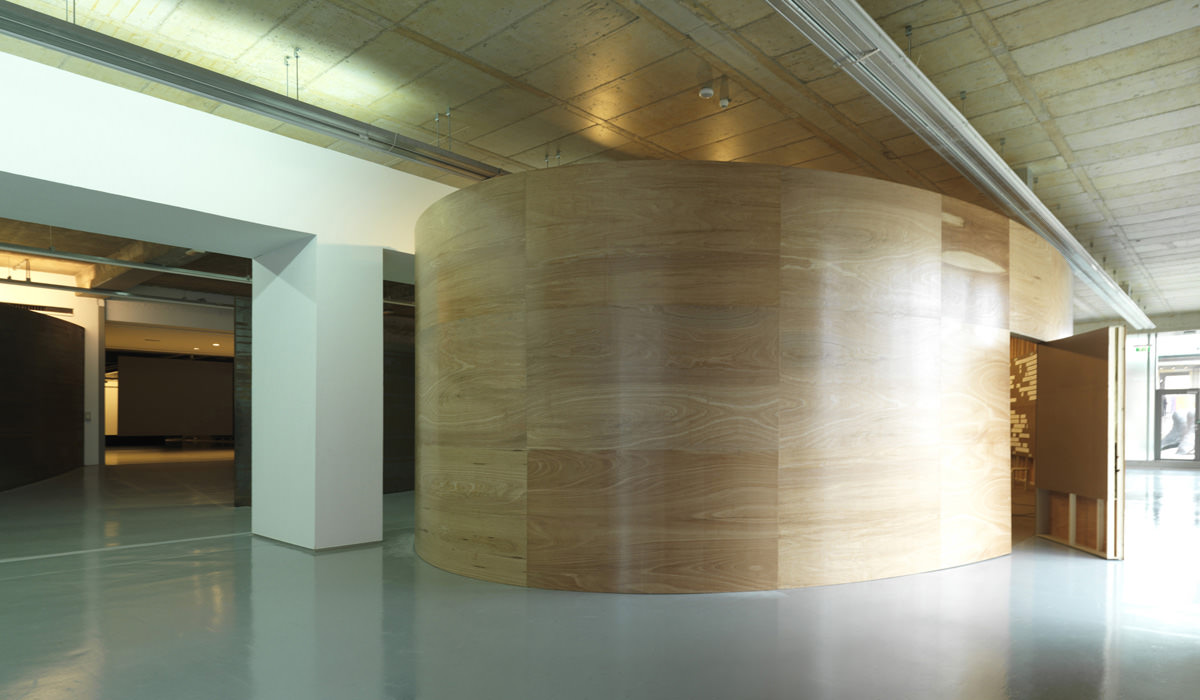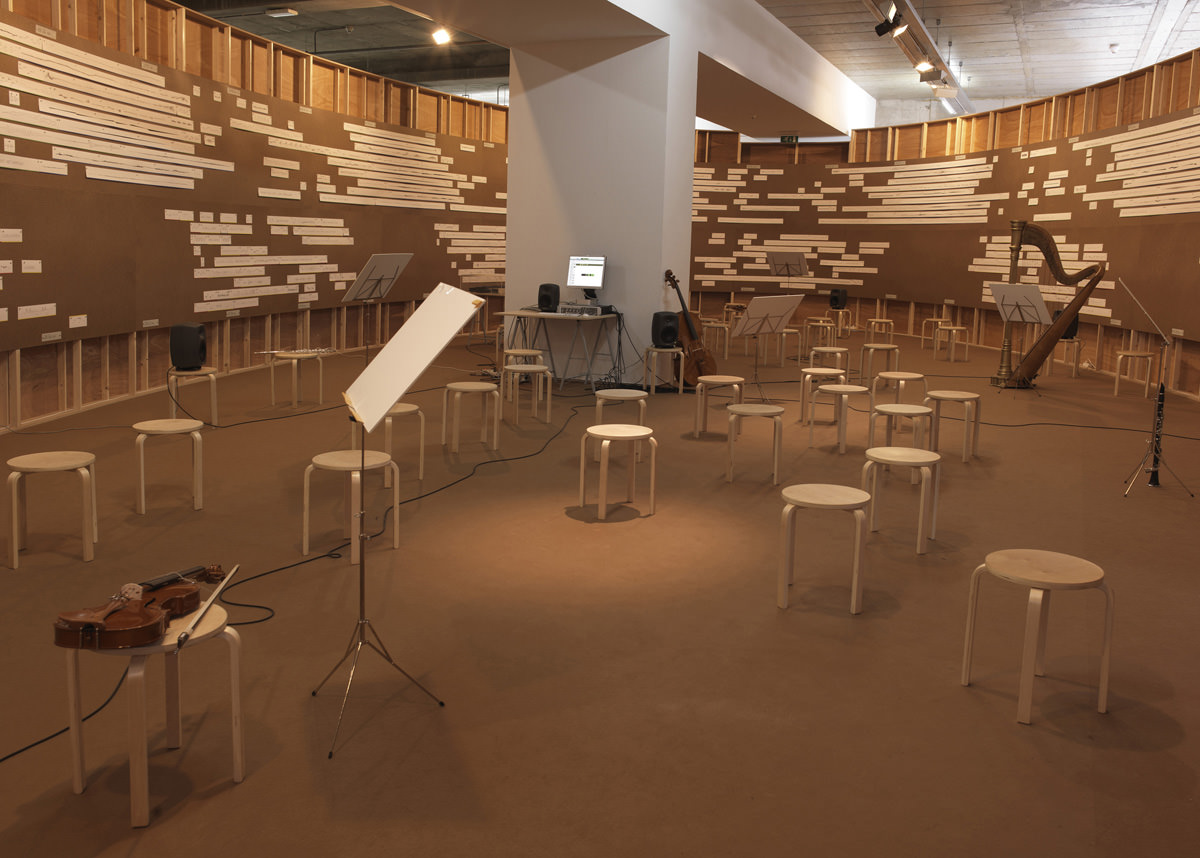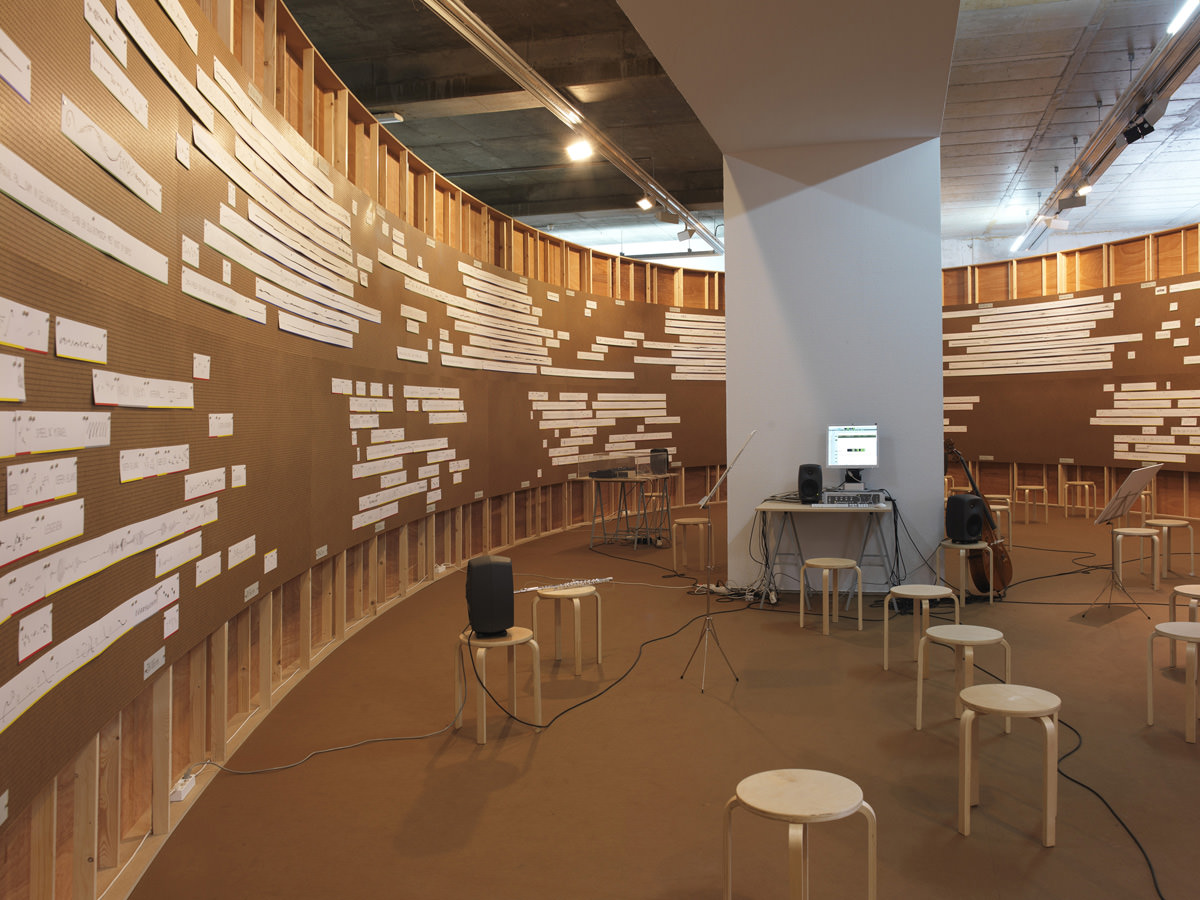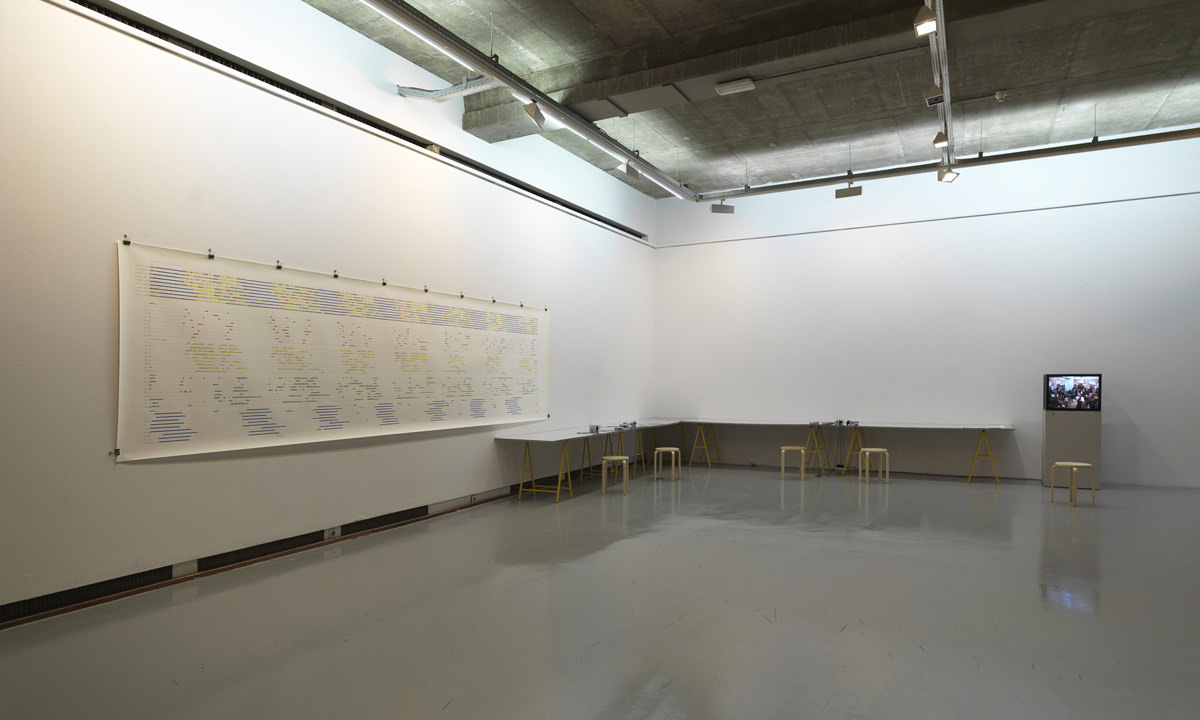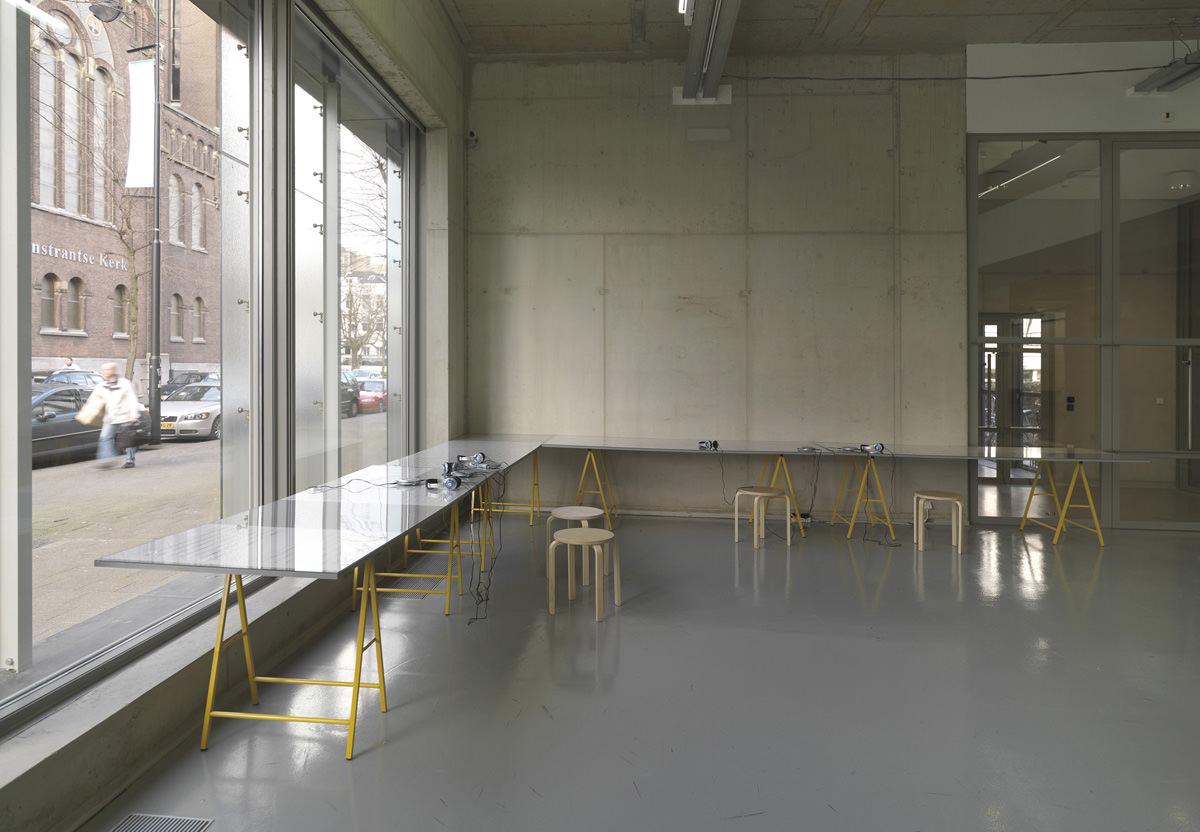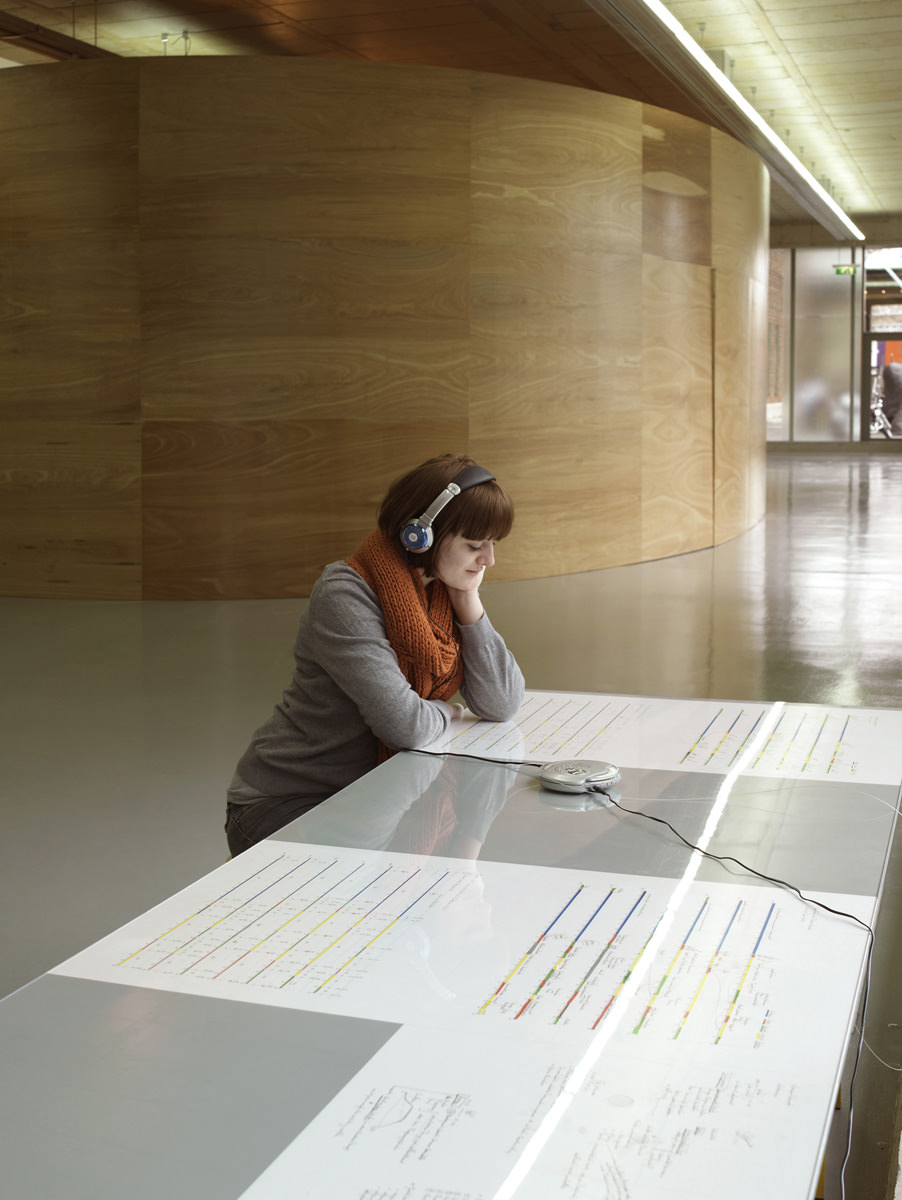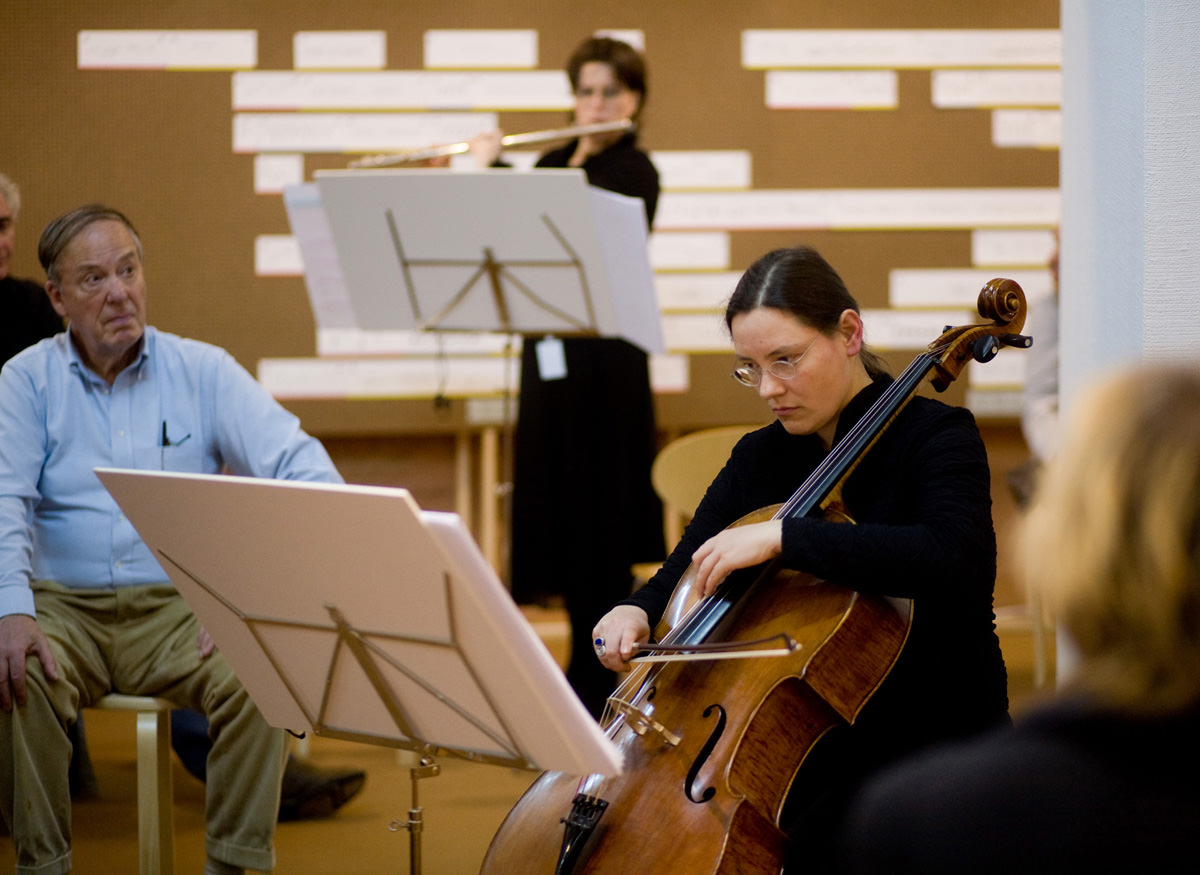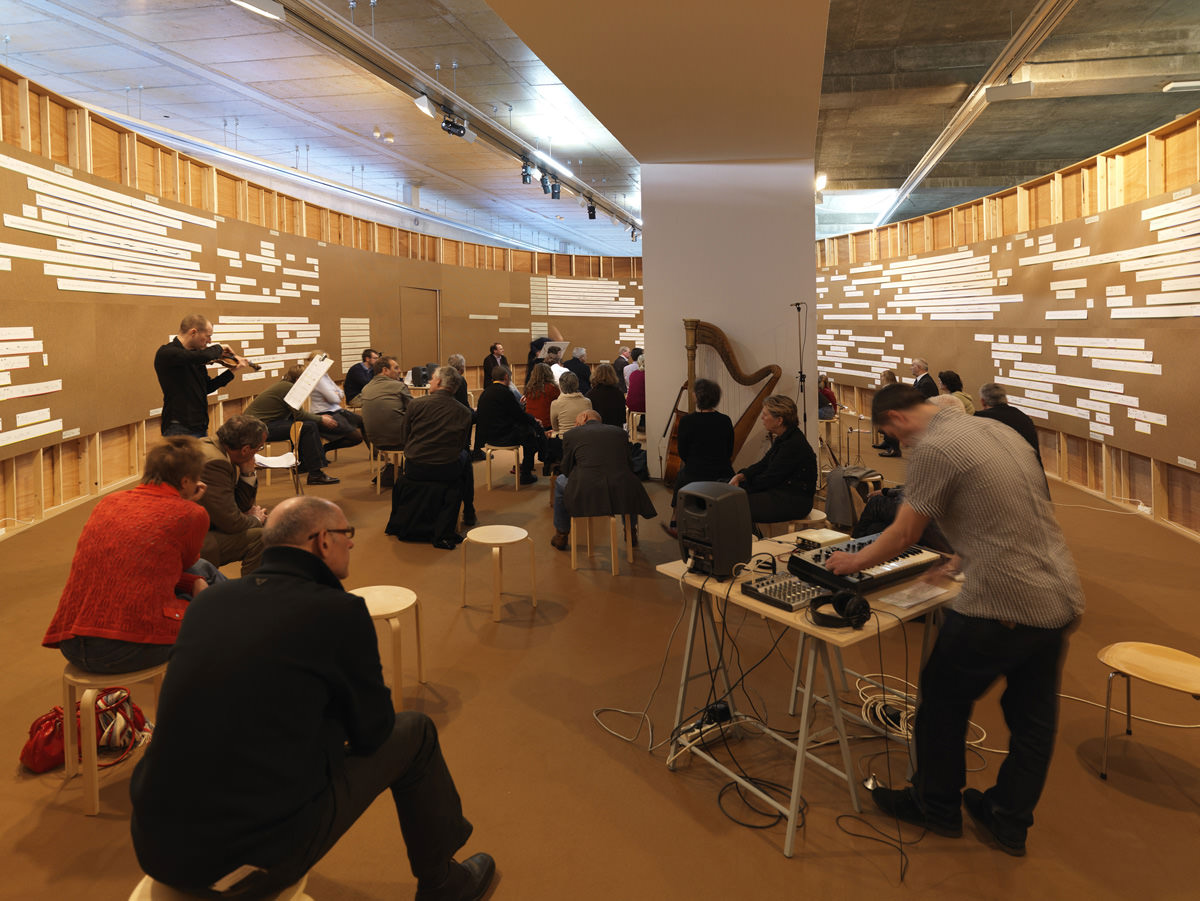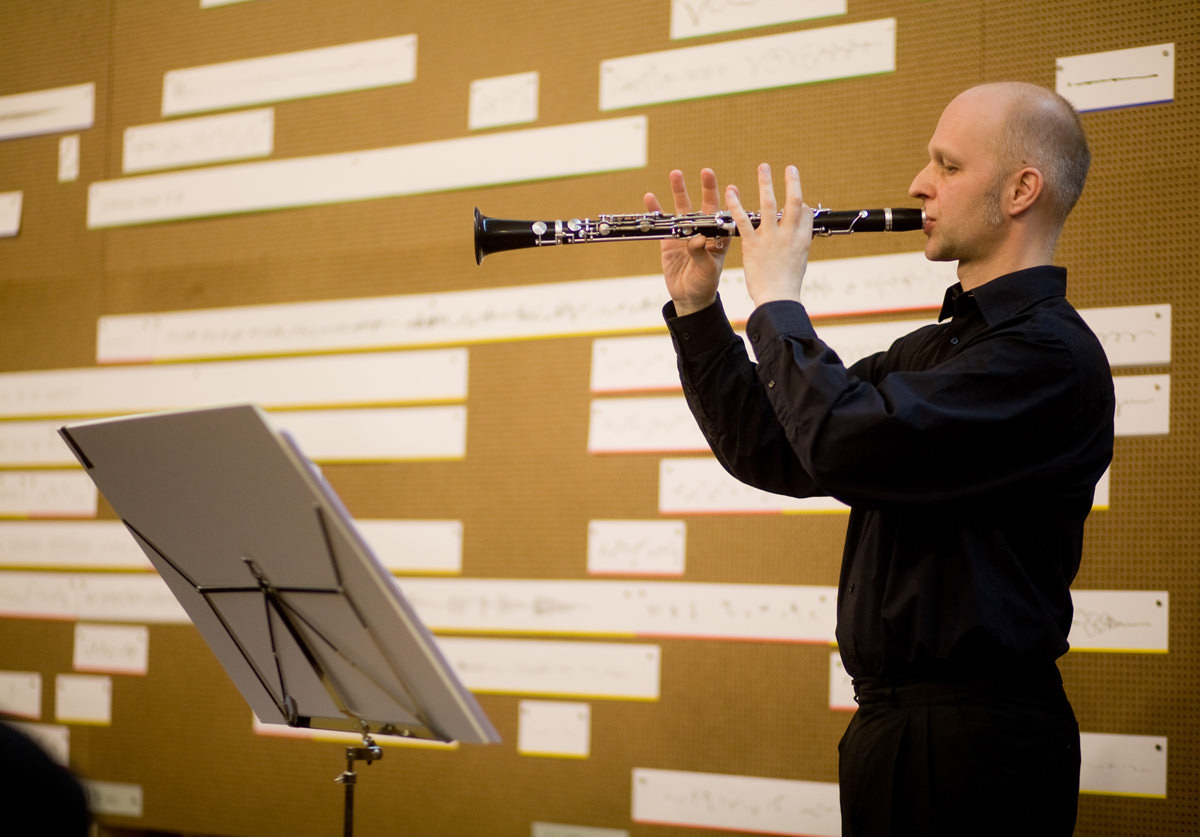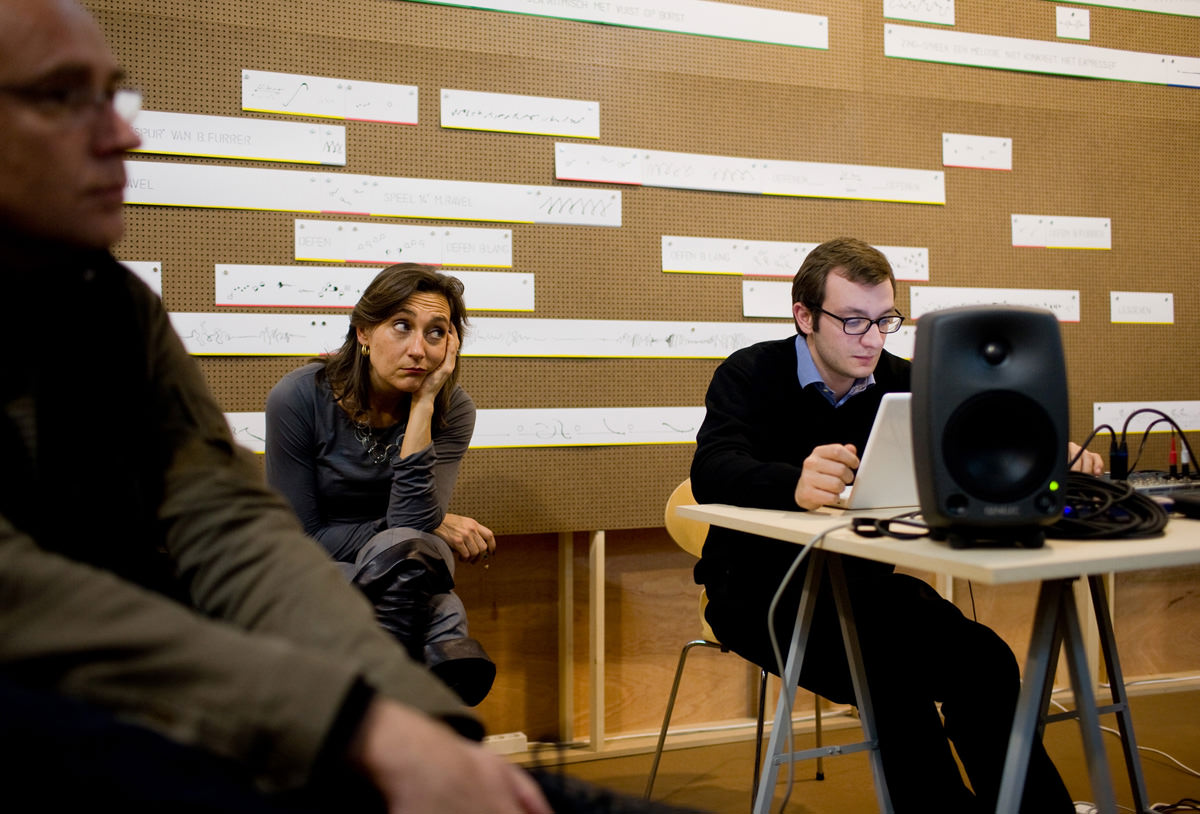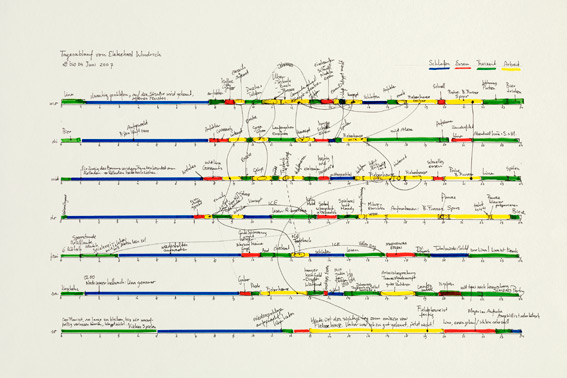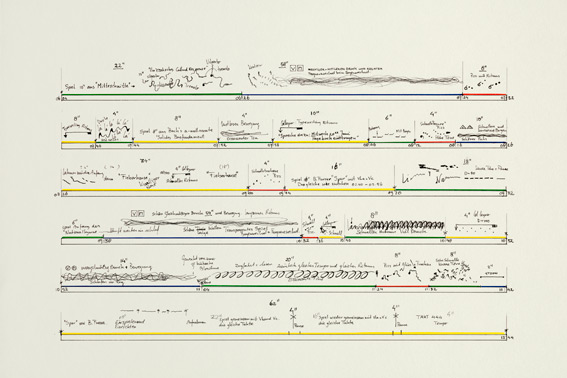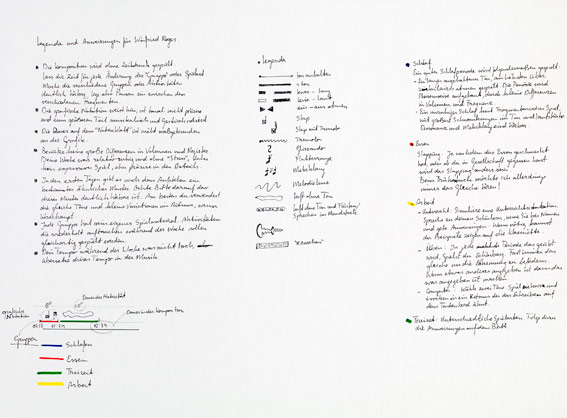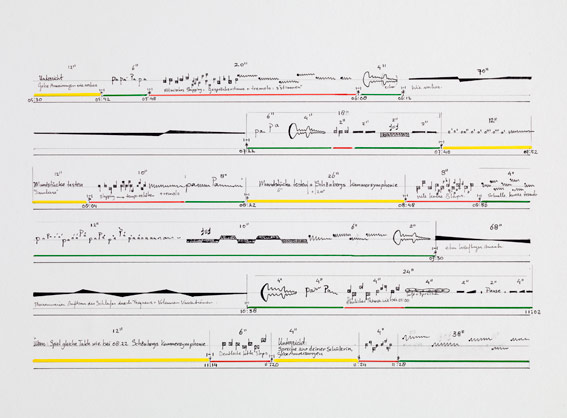I asked nine musicians to write down exactly what they did on each day of the week, between the 18th and 24th of June 2007, for how long, and why and with what emotions they undertook various activities. Based on these texts, I analyzed and compared their activities, daily routines, and rhythms. The goal of this method of composition was to see whether the daily rhythms of musicians can be translated into a musical composition that can be performed at the end in a sound installation and concert. Each hour of the week corresponds to 8 seconds of music.
To make the day’s rhythm audible as a parameter, a number of different activities were reduced and divided into five categories: sleeping, eating, working, traveling, and leisure. Each of these categories received its specific playing and tone material. The length of the activity or category determined the length in the composition, the emotion accompanying the activity influenced how it was played. This arrangement is carried out hand in hand with the development of the legend and the graphic script. Afterward, I set down the parameters according to which the playing material can be made variable, because although certain activities recur daily, they are not always perceived in the same way. "Verstrijken" is a structured improvisation in which a number of parameters are strictly determined. Within this structure, I ask for improvisation on agreed material or agreed playing techniques.
The nine musicians all kept variously long, detailed and personal diaries. So when writing the solo parts, I had to work in varying ways. The more details appeared in the diary, the more precisely I was able to use the graphic symbols. The less elaborate their notes, the more we had to jointly work out how and what would be played.
In this composition, every musician can be heard as a soloist and at the same time in comparison with the other eight instrumentalists. The ensemble is connected by the week in which they wrote in their diaries and by their work as professional musicians. They differ in age, sex, instrument, training, place of residence, and musical direction. If the piece is performed as an ensemble piece, then, to make the activities of the various musicians more recognizable and comparable, I choose to repeat the whole week several times. If the composition is performed as a solo, duo, or trio, either all or only three categories are heard.

